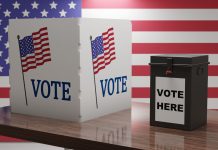By Jeremy Ghez
Last December, the New York Times published an op-ed titled “The People Who Actually Had a Pretty Great Year”, discussing the Americans who haven’t really been impacted by the economic downturn, and have even seen their bank balances rise. It’s food for thought on the impact of Covid-19 on the United States. Has it really been that painless for an entire section of the population?
First of all, it’s worth remembering that whenever a new recession hits, economists go back to singing their ABCs when discussing the future shape of the recovery. The Covid-19 crisis in the United States is no exception. As always, the most optimistic have been dreaming (and still are) of a V-shaped recovery, bouncing back just as quickly as it dropped. Others fear that repeated lockdowns will cause a W-shaped recovery, rising only to fall again when new restrictions are imposed.
Some economists are concerned about the long-lasting structural effects of this crisis. They say it could irreparably damage the American economy, with small and medium-sized businesses unable to make it through successive lockdowns. This would make recovery much slower and require long-term transition for parts of the economy. This would mean a U-shaped recovery, or even a “swoosh” recovery, one that’s even slower than a U. (Here we’ve moved beyond letters, as this crisis is too complex to be summed up by a simple shape.) The most pessimistic are betting on an L-shaped recovery, with the economy stagnating for a long time, similar to what happened during Japan’s “lost decade” in the 1990s.
Multiple American realities and the risk of a K-shaped recovery
In actual fact, any hope of a V-shaped recovery for the American economy is dwindling. Despite better results in the third quarter of 2020, job creation in the United States well and truly slowed down at the end of the year. More than 10 million jobs were lost, perhaps forever. The idea that the economy will quickly recover because the downturn is due to politicians trying to save lives through lockdown measures, rather than the result of fundamental economic flaws, is yet to be proven.
A “swoosh” recovery seems far more likely. But that doesn’t explain why so many observers and economic stakeholders in the United States seem to think that large parts of the population and of the industry are doing just fine.
There’s actually a remarkable contrast between those industries that have suffered the full force of the pandemic and lockdowns, like the air travel, tourism, food service and hotel industries, and those that had already begun to adapt to the demands of digitalization and the Fourth Industrial Revolution, such as the technology sector and parts of retail. Other sectors like hardware, interior design and food delivery, as well as any industry based on consumer home goods more generally, have also experienced significant growth. Americans who still had a disposable income during the crisis have breathed life and prosperity into the second category, without ever being able to use the services of the first, thereby accentuating this contrast.
Similarly, there is striking contrast between certain groups. On one side, there are those who profited during the pandemic from the stock markets’ spectacular performance (particularly for tech companies, who came out on top during lockdown) or were able to hold onto their job or quickly find a new one in late spring when local economies reopened. On the other, there are those who were reliant on economic sectors that have taken a beating during the Covid-19 pandemic. The second category is mostly made up of disadvantaged parts of the population and minorities, who often don’t have the qualifications nor the necessary skills to ride the wave of the recovery or reinvent their professional identity.
It should also be noted that since last summer, 8 million Americans have fallen into poverty and 12 million renters have racked up over $5,000 of debt to their landlords. Job creation was ticking along but has not caught up, and this development takes on a whole new meaning when you remember that the pandemic is likely to accelerate the transition of an entire section of the labor market. This transition effort will not demand the same things from sectors that have been permanently affected by Covid-19.
What’s also clear is that it’s not only wealthy or upper-middle class Americans who benefited. Americans who were able to take advantage of the organizational changes affecting work and companies, and move to other parts of the country where the cost of living is lower (especially rent), fared significantly better. But not every sector experienced these changes. It was only possible for jobs where remote working was an option and in sectors where companies and the workforce had already adapted to new digital tools, for example.
Inequalities in professional outcomes emerging from this crisis are undeniable. Covid-19 is only partly responsible, given that the sectors and populations who are doing the best had already started to transition before the pandemic hit. Nevertheless, it has certainly escalated the disparities between certain sectors and groups – enter “K,” a new letter in the debate on what form the recovery will take. This kind of recovery means that part of the economy will be able to adapt and even prosper during the crisis, while the other will likely suffer from ongoing difficulties.
With the country politically divided, the American economy is at risk of following suite.
Translated from the French by Rosie Marsland for Fast ForWord.
This article was originally published in The Conversation on 20 January 2021. It can be accessed here: https://theconversation.com/fact-check-us-did-some-americans-really-get-richer-during-the-pandemic-153584
About the Author
 Jeremy Ghez is a Professor of Economics and International Affairs at HEC Paris Business School. He is also an Academic Director at HEC and a consultant for the public and private sector.
Jeremy Ghez is a Professor of Economics and International Affairs at HEC Paris Business School. He is also an Academic Director at HEC and a consultant for the public and private sector.

































































